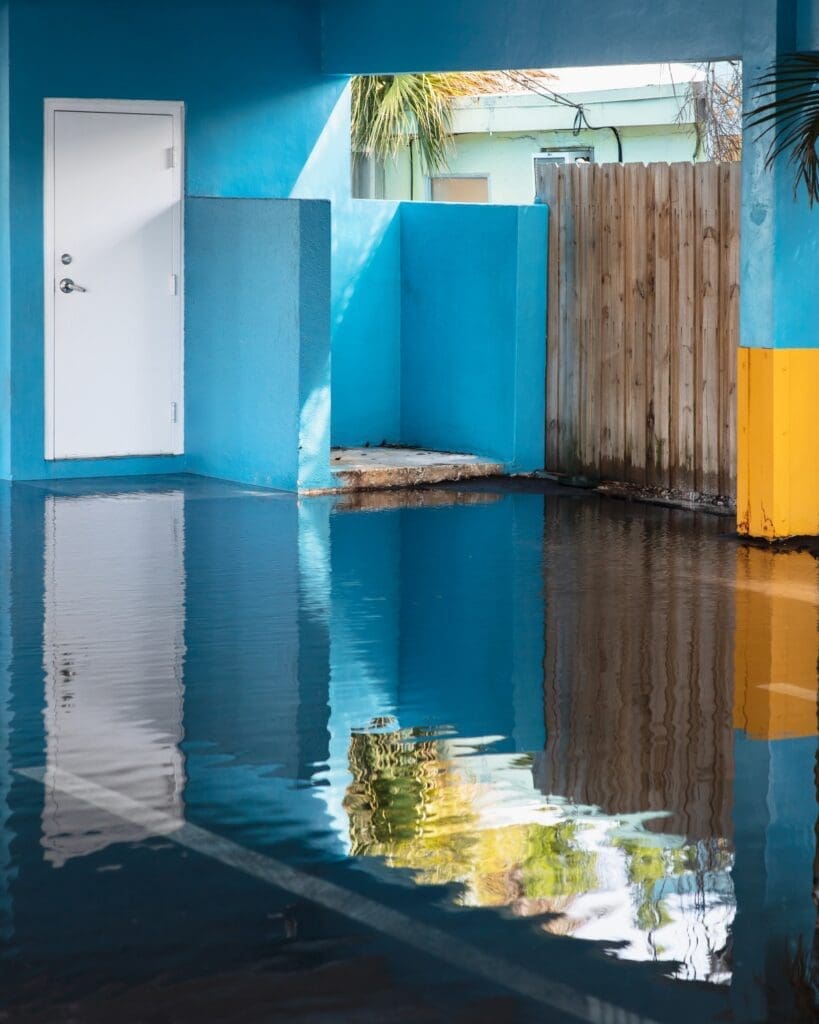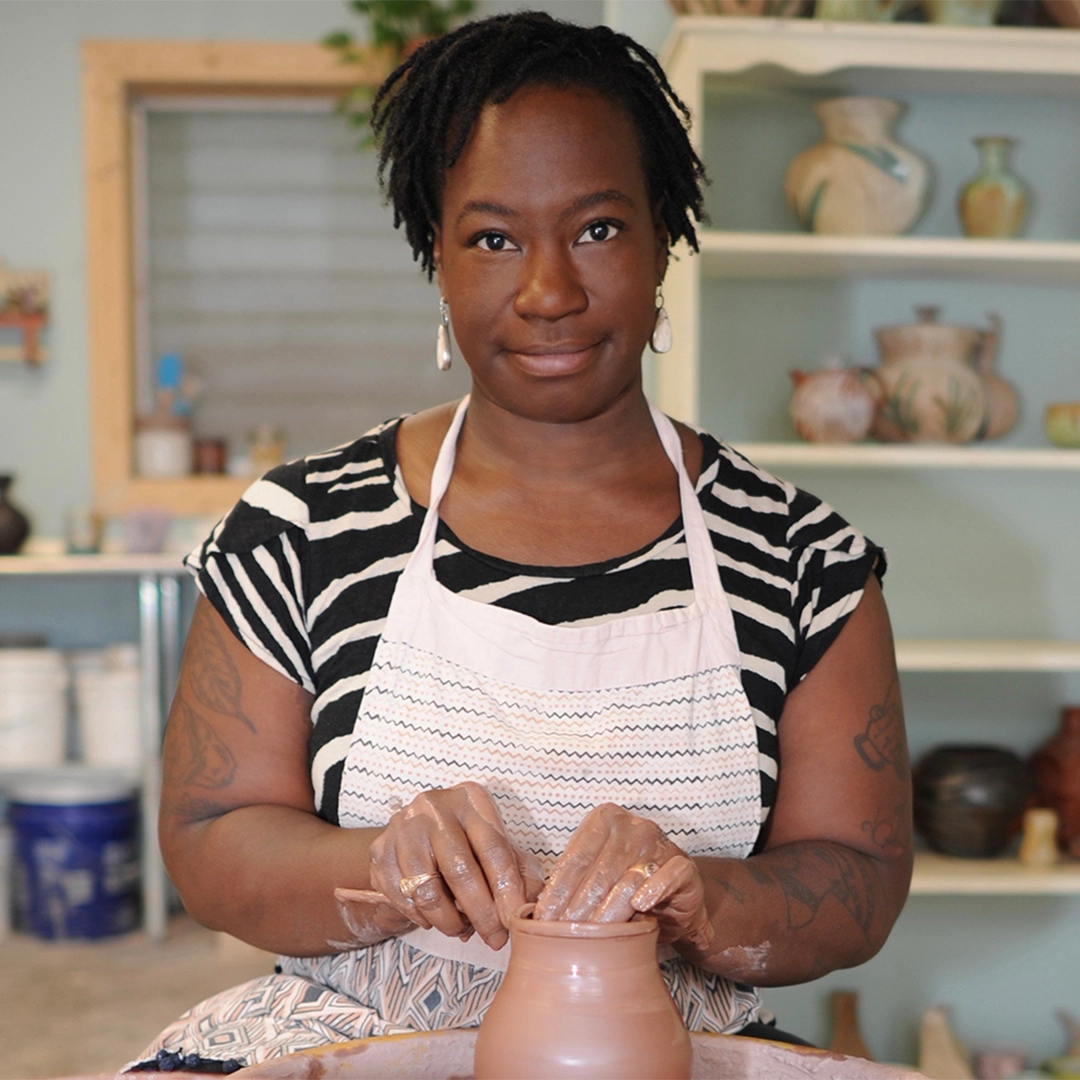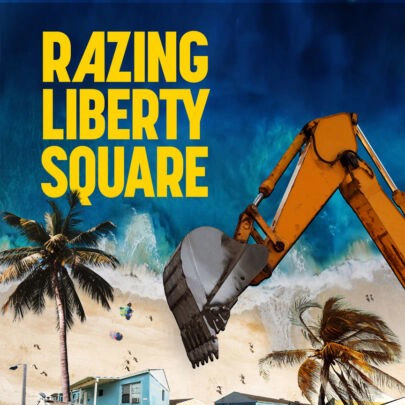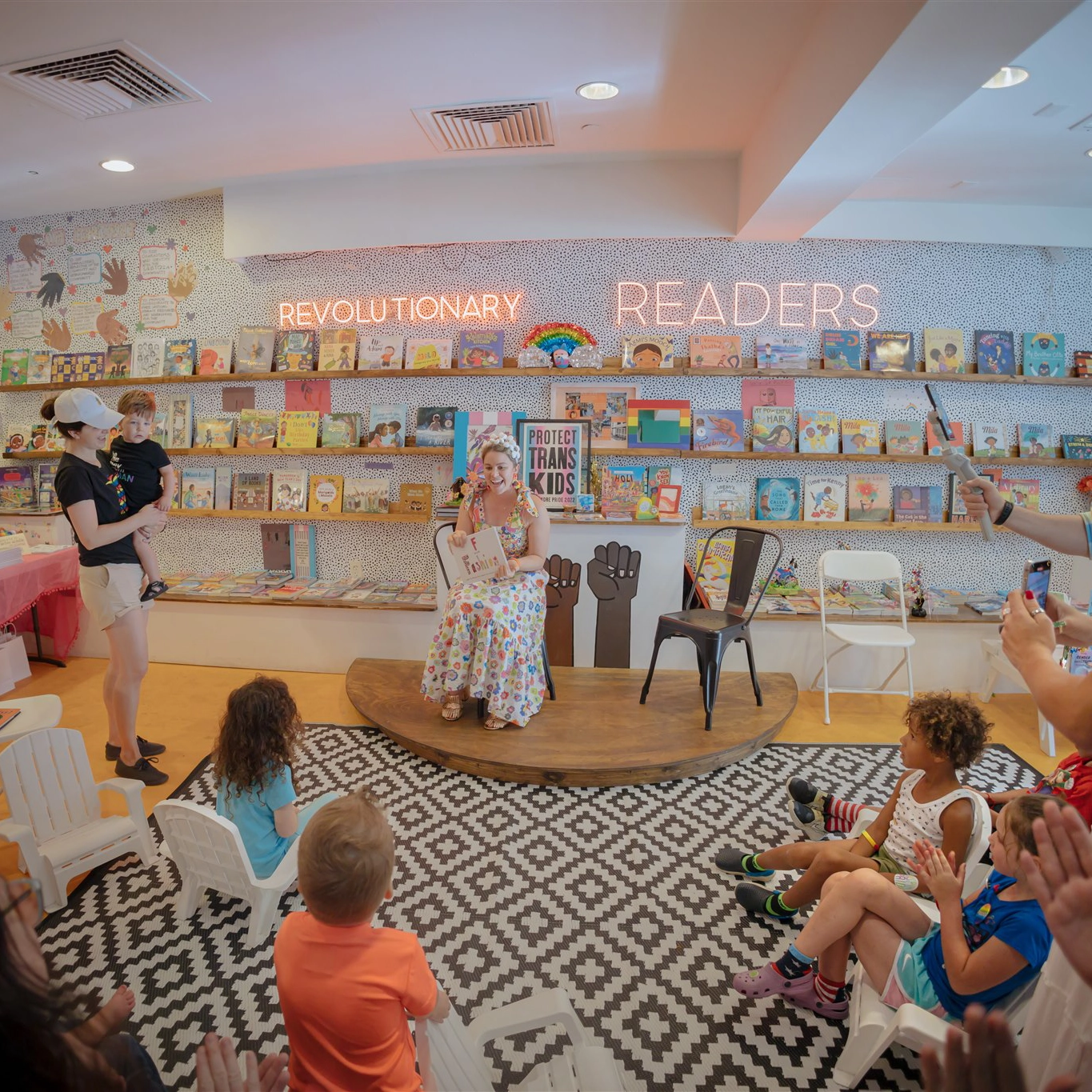Anastasia Samoylova Captures the Sinking Sunshine State on Camera
A Florida newcomer falls in love with her adopted home as she photographs its vulnerabilities.

Anastasia Samoylova first encountered Florida the way countless people do: on a cruise stopover back in 2008.
When the Russian artist disembarked onto the glitzy shores of Miami Beach, her eyes were immediately drawn to the city’s vibrant atmosphere, from the long pink sidewalk framing the beach to the striking art deco buildings dusted in turquoise hues.
She let her lens lead the way down Ocean Drive, dotted with boutique hotels, and along Lincoln Road, with its mishmash of retro theaters and bustling shopping districts.
“I remember having a very visceral response to Miami Beach,” Samoylova says. “Something strong was clicking. It resonated with me. … I thought it was just this small jewel.”
After completing her degree in environmental design in Russia, Samoylova moved to the United States to pursue her MFA at Bradley University in Illinois. She spent five years teaching art and photography in the Prairie State and Massachusetts while she worked on her own photography, paintings and installations on the side.
In 2016, Samoylova decided she was ready to dedicate all of her time to her art. An artist’s residency at the Fountainhead Studios provided an opportunity to return to Miami to dive into Florida’s complexities. Now she devotes her days to documenting the state’s idiosyncrasies on camera. The keen composition and layered nature of her images reveal an eye for Florida that could only belong to a local. A since-closed movie theater boarded up with slabs of plywood in Pahokee. Striking former cult quarters in Estero. Vizcaya Museum and Gardens’s tiles submerged in sitting water.
There’s a complaint, especially about Miami, that it doesn’t have any identity beyond being this sort of subject of jokes and how it’s all superficial. But it’s so much more than that.
— Anastasia Samoylova
Samoylova’s first project inspired by her time in Florida, FloodZone, documents the effect of rising sea levels on the state’s delicate landscape of high-rises and beach towns. With her background in environmental issues, Samoylova was struck by Miami’s vulnerability to climate change and its inevitable impact.

But it wasn’t until the artist learned she lived in a flood zone that she decided to capture the phenomenon through photographs.
Soon, the project grew into documenting how Florida’s glossy, postcard-esque facade and its environmental perils coincide. In one image, reflections of light shimmer on the stagnant surface of a decrepit fountain at a hurricane shelter in Miami Beach. In another, an aquamarine pool is clogged with greenery post-hurricane. It was this series that earned her a finalist spot for the 2021 Florida Prize in Contemporary Art.
Photographing Florida’s rapidly intruding floods can be depressing, she admits, but her work isn’t intended to make people feel a certain way. Instead, she hopes her art prompts reflection on climate change.
“I see [Florida] as having a lot of potential,” Samoylova says. In a state on the front lines of the fight against global warming, there’s also an opportunity for Floridians to act as leaders in the climate emergency. “There’s a hope that [Florida] will come up with solutions as well,” she says.
Samoylova has been a Floridian for five years now, and her work has brought her to all corners of the state. One of her other series, entitled “Floridas,” looks at her new home through her eyes as an outsider, and now, as an insider.

“Simplifying Florida doesn’t do it justice,” she explains. “At the same time you can’t deny quite a large number of absurdities here that don’t really match up. … I am mainly curious and engaged with some more monumental and long-term expressions of culture and of the people who inhabit these places.”
That’s how she found and photographed the Van Gogh Starry Night house while passing through Mount Dora. She read that the owners painted it with swirls of blue and yellow so their autistic son could always find his way back home. Samoylova was impressed by their perseverance in keeping the home colorful, even after the city tried to make them repaint.
From abandoned dome houses being swallowed by the sea to scruffy locals sporting “No Mercy” tattoos, the camera has taken Samoylova all over the Sunshine State—and brought her closer to it in the process.
“I love living here,” she says. “There’s a complaint, especially about Miami, that it doesn’t have any identity beyond being this sort of subject of jokes and how it’s all superficial. But it’s so much more than that.”
It’s a truth Samoylova noticed back in 2008 on that cruise stopover in Miami, and it’s one she seems to understand more deeply with every shutter of her lens.





